ITEM 1 . Original news photo service photograph, Doughboy at flare gun. 1918. 8x6 inches. $350
ITEM 2: Soldier in trench, walking, damp and cold. 1918. 7x5 inches. Original image from a new photo service agency. Very good condition. $350
Ref: JF Ptak Science Books Post 1308
If I was in a time machine, stepping back through a wormhole and into another segment of another reality, one of the places I'd least want to step into would be a cramped, cold, wet, dirty and dangerous place. Like this American soldier, waiting for a German attack to begin so that he could launch a warning flare to the rest of the soldiers, hunkered down in a cold wet place in the front line along the Lorraine section in France, mid-way through 1918 and almost all-the-way-through WWI.
There are of course much worse places to be, but I think if I limited my time travel to include what I would be on the other end--a U.S. soldier--one of the places at te top of te list would be a generic trench in the front line of a battle late in the fighting in WWI. Sitting there, watchful, waiting for the advance of thousands of German troops, charging over a ruined and sulfurous landscape, waiting for the ruination to begin as it churned its way through No Man's Land. Of course it could be worse--one could be going "over the top", charging across the Desolate Place towards a line of thousands of entrenched soldiers all of whom were trying to kill. you.
Or of course you could be in a blue coat marching in a straight line towards a series of long lines of men in red coats, everyone getting ready to get close enough to discharge an 69-calibre (or thereabouts) ball across an open plane of hundreds of feet into the ranks of the opponent. Or being in a Marine uniform in Tarawa, in the Gilberts, in November 1943. Or being in Butternut, crossing the Emmitsburg Road on the way up Cemetery Ridge on 3 July, or being in any uniform whatsoever at Antietam.
The places and times get worse I think once you allow yourself to be any other solider in any other uniform. A French soldier, for example, sitting in a similar spot in the same battle along a front line as our American Doughboy, above, would've been worse. A Belgian soldier virtually anywhere also would have fared worse, statistically, than just about anyone else in WWI. Being a newly-minted soldier wearing the uniform of the Soviet Socialist Republics in the Summer of 1941 would probably have been half-a-death-sentence. Of course the list goes on, and on.
Perhaps one of the worst inventions in the history of warfare was The Trench. Millions of men were wounded or met their ends while defending one, or attacking one, or being in-between two of them. Hundreds of thousands of troops spent months charging back and forth between opposing lines, the ground over which they fought made uninhabitable for almost any form of life. Cold, wet, bad.
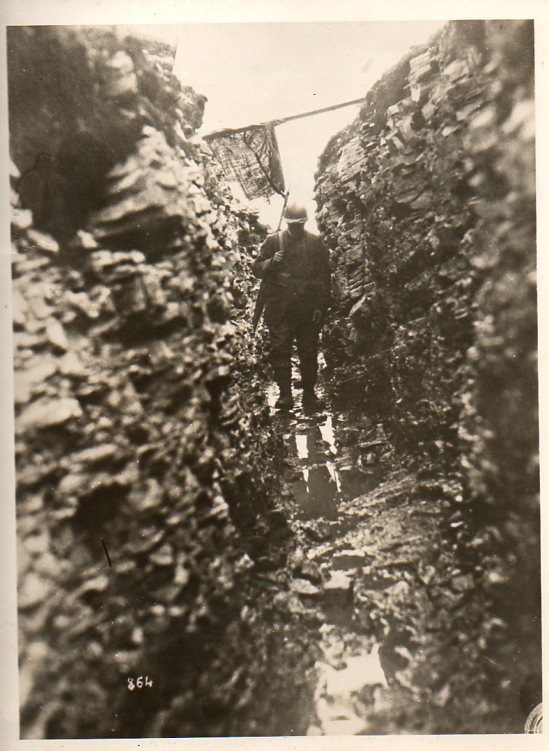
Here's another original photograph made by the Western Newspaper Union Photo Service, as a "British Official Photograph" (with the "British" part penciled out and replaced by an unknown hand, "Italian"), The photo agency supplied a caption for the image (that was supposed to have been used by the newspaper or magazine that published the picture) as follows:
And the detail:


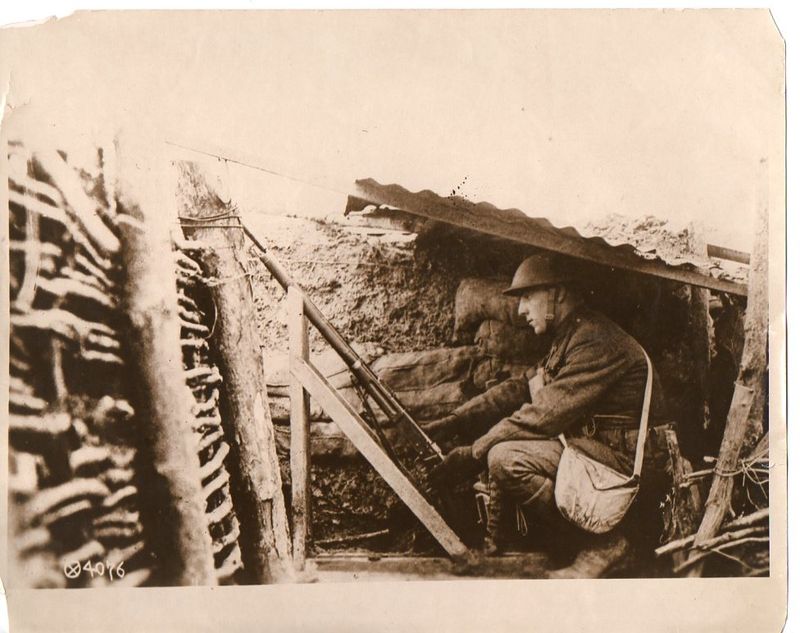
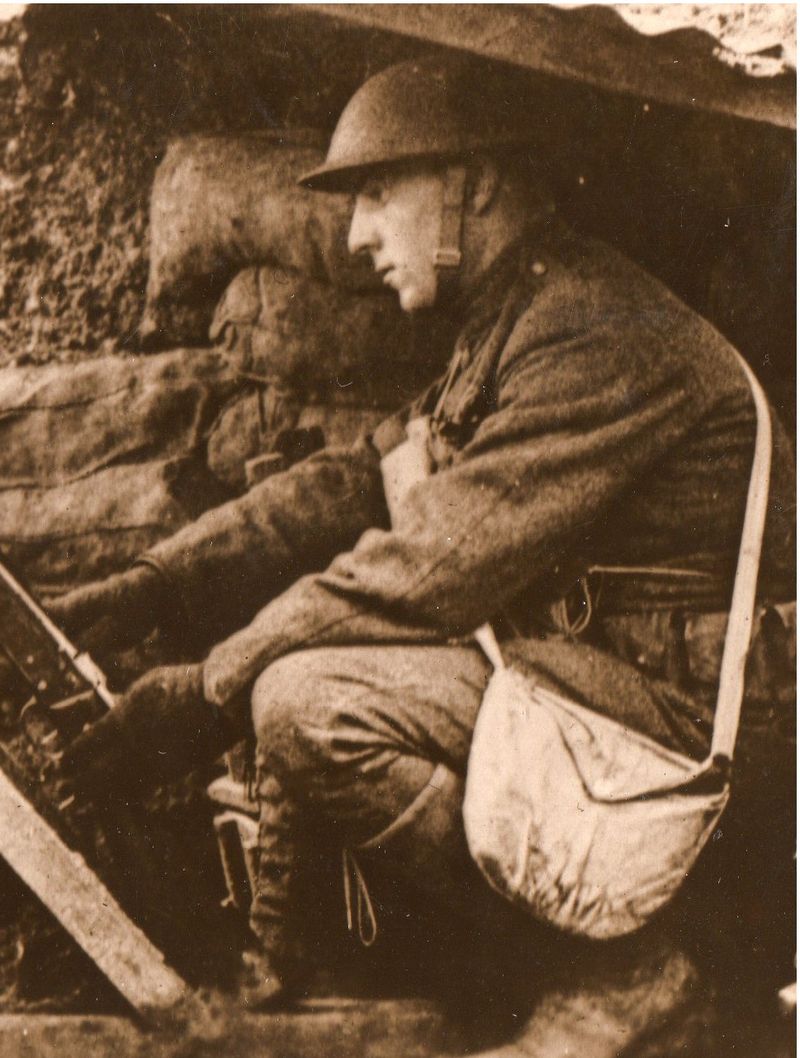
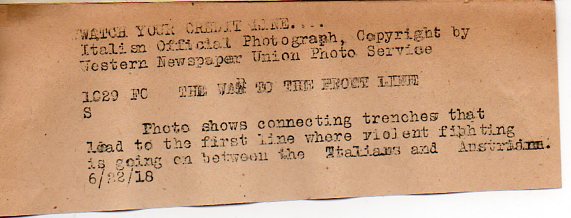
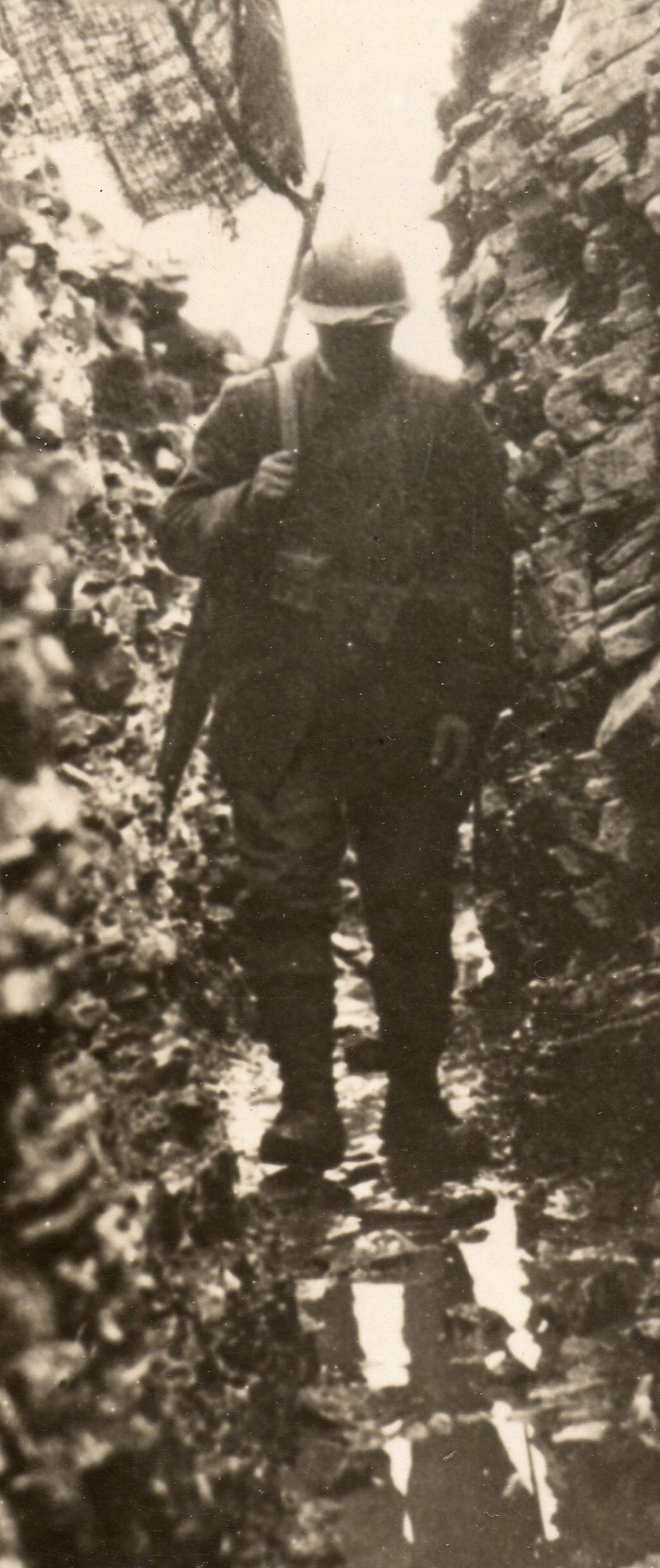


Comments